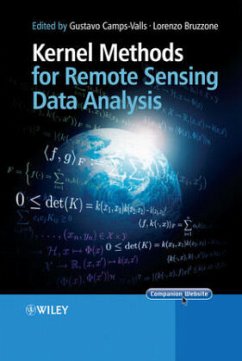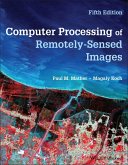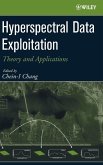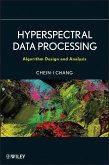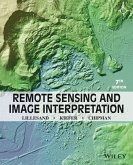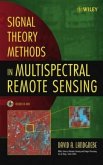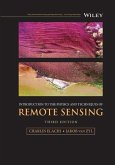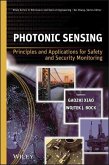Written by well-regarded experts in the field, Kernel Methods for Remote Sensing Data Analysis presents the theoretical foundations of kernel methods relevant to the remote sensing domain. This practical guide to the design and implementation of these methods enables engineers, scientists, and researchers to develop a robust and principled approach to their particular application. The text includes state-of-the art-knowledge analyzing the methodological and practical challenges related to the application of KMs to remote sensing problems.
Kernel methods have long been established as effective techniques in the framework of machine learning and pattern recognition, and have now become the standard approach to many remote sensing applications. With algorithms that combine statistics and geometry, kernel methods have proven successful across many different domains related to the analysis of images of the Earth acquired from airborne and satellite sensors, including natural resource control, detection and monitoring of anthropic infrastructures (e.g. urban areas), agriculture inventorying, disaster prevention and damage assessment, and anomaly and target detection.
Presenting the theoretical foundations of kernel methods (KMs) relevant to the remote sensing domain, this book serves as a practical guide to the design and implementation of these methods. Five distinct parts present state-of-the-art research related to remote sensing based on the recent advances in kernel methods, analysing the related methodological and practical challenges:
Part I introduces the key concepts of machine learning for remote sensing, and the theoretical and practical foundations of kernel methods.
Part II explores supervised image classification including Super Vector Machines (SVMs), kernel discriminant analysis, multi-temporal image classification, target detection with kernels, and Support Vector Data Description (SVDD) algorithms for anomaly detection.
Part III looks at semi-supervised classification with transductive SVM approaches for hyperspectral image classification and kernel mean data classification.
Part IV examines regression and model inversion, including the concept of a kernel unmixing algorithm for hyperspectral imagery, the theory and methods for quantitative remote sensing inverse problems with kernel-based equations, kernel-based BRDF (Bidirectional Reflectance Distribution Function), and temperature retrieval KMs.
Part V deals with kernel-based feature extraction and provides a review of the principles of several multivariate analysis methods and their kernel extensions.
This book is aimed at engineers, scientists and researchers involved in remote sensing data processing, and also those working within machine learning and pattern recognition.
Kernel methods have long been established as effective techniques in the framework of machine learning and pattern recognition, and have now become the standard approach to many remote sensing applications. With algorithms that combine statistics and geometry, kernel methods have proven successful across many different domains related to the analysis of images of the Earth acquired from airborne and satellite sensors, including natural resource control, detection and monitoring of anthropic infrastructures (e.g. urban areas), agriculture inventorying, disaster prevention and damage assessment, and anomaly and target detection.
Presenting the theoretical foundations of kernel methods (KMs) relevant to the remote sensing domain, this book serves as a practical guide to the design and implementation of these methods. Five distinct parts present state-of-the-art research related to remote sensing based on the recent advances in kernel methods, analysing the related methodological and practical challenges:
Part I introduces the key concepts of machine learning for remote sensing, and the theoretical and practical foundations of kernel methods.
Part II explores supervised image classification including Super Vector Machines (SVMs), kernel discriminant analysis, multi-temporal image classification, target detection with kernels, and Support Vector Data Description (SVDD) algorithms for anomaly detection.
Part III looks at semi-supervised classification with transductive SVM approaches for hyperspectral image classification and kernel mean data classification.
Part IV examines regression and model inversion, including the concept of a kernel unmixing algorithm for hyperspectral imagery, the theory and methods for quantitative remote sensing inverse problems with kernel-based equations, kernel-based BRDF (Bidirectional Reflectance Distribution Function), and temperature retrieval KMs.
Part V deals with kernel-based feature extraction and provides a review of the principles of several multivariate analysis methods and their kernel extensions.
This book is aimed at engineers, scientists and researchers involved in remote sensing data processing, and also those working within machine learning and pattern recognition.

